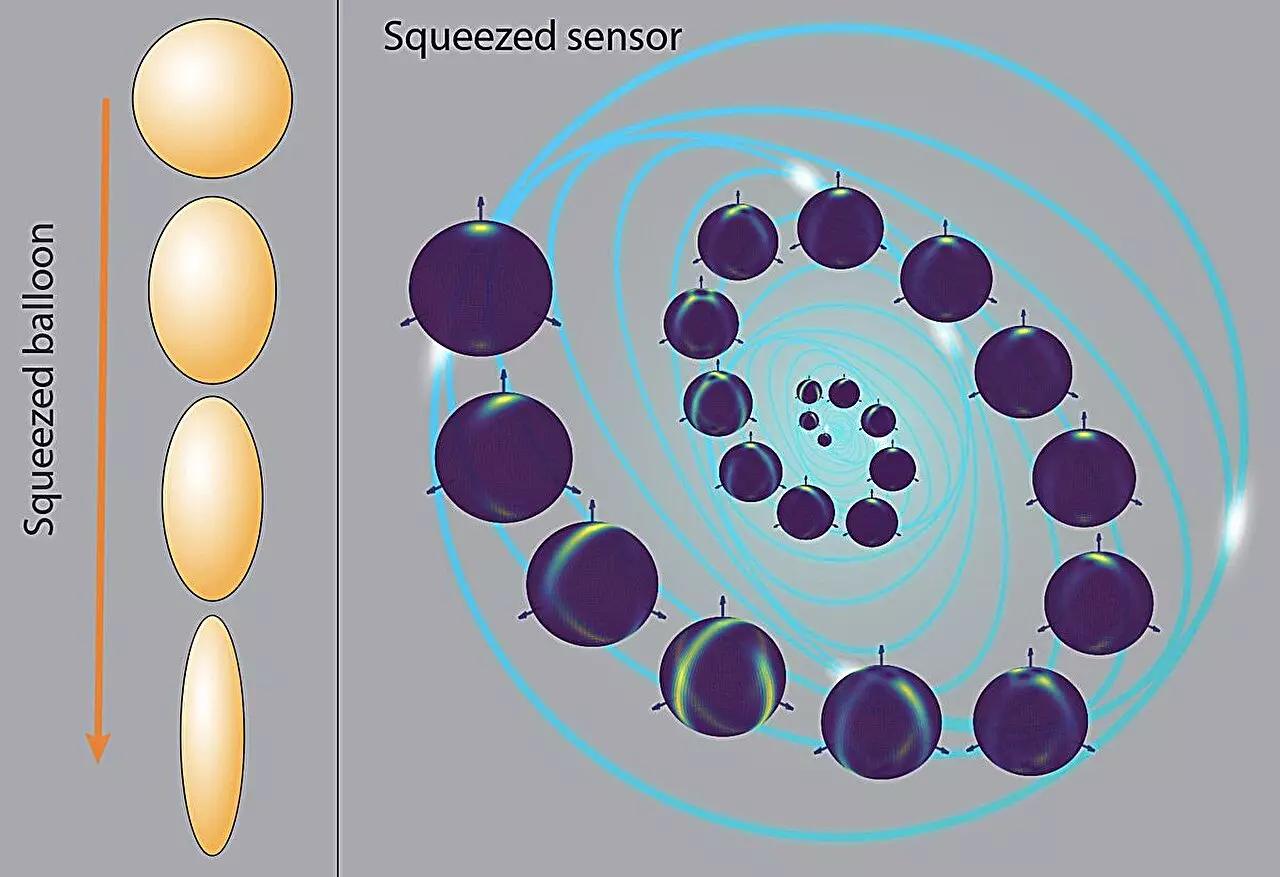Quantum mechanics operates on principles that often defy common intuition. One of the more fascinating yet complex phenomena is quantum squeezing, a process that involves the manipulation of uncertainty within quantum systems. At the heart of quantum mechanics lies the Heisenberg Uncertainty Principle, which posits that certain pairs of physical properties, like position and momentum, cannot be simultaneously measured with arbitrary precision. Essentially, if we reduce the uncertainty in one parameter, we must accept an increase in the uncertainty of its conjugate variable. This paper aims to delve deeper into this concept, illustrating its implications and potential applications in advancing measurement technologies.
The analogy of a balloon effectively captures the principle of quantum squeezing. A balloon, when squeezed on one side, alters its shape in such a way that it becomes elongated in another direction. This visual representation allows us to understand that while the overall volume—and hence uncertainty—remains constant, the distribution of that uncertainty evolves. The challenge and marvel of quantum squeezing lie in precisely controlling this redistribution to enhance the accuracy of measurements.
Quantum Squeezing: A Tool for Enhanced Measurement Precision
Recent developments in quantum research have demonstrated the practical advantages of quantum squeezing. The ability to enhance precision in measuring particular variables while letting others exhibit increased uncertainty opens up new pathways toward refining our measurement systems in various fields. A notable application is in atomic clocks, where minimizing uncertainty in timekeeping can lead to far more accurate tracking systems, which are crucial for GPS technologies and communications.
The article by Dr. Le Bin Ho at Tohoku University further explores these concepts by addressing multi-factor measurements—a significantly more complicated scenario compared to single-variable scenarios. His research illustrates that while theoretical models suggest the potential for achieving extraordinary precision in ideal conditions, real-world applications face limitations, particularly when attempting to measure multiple parameters simultaneously. The challenge lies in understanding how to maintain quantum entanglement across multiple parameters to achieve enough stability for accurate measurements.
One of the stimulating aspects of Dr. Ho’s work is its implications for various technologies, particularly in fields relying on quantum measurements. Improved measurement precision can lead to heightened capabilities within quantum imaging, enabling sharper images in medical diagnostics and surveillance. For example, advancements in MRI technology could allow for earlier disease detection through improved resolution. Similarly, enhancements in quantum radar systems might significantly refine object detection capabilities, vital for both civilian and military applications.
In biophysics, the research could enhance the efficacy of biosensors, revolutionizing how we detect biochemical signals associated with various diseases. Overall, these advancements potentially herald a new era of precision measurement in multiple domains, from health care to aerospace.
Despite the promising findings, the research landscape remains complex. Dr. Ho emphasizes the need for further exploration into how various forms of noise impact quantum measurements. Understanding these noise interactions is crucial for optimizing the precision achieved through quantum squeezing techniques. By investigating the types of noise that can introduce uncertainties in measurement, researchers can devise strategies to mitigate their effects and refine measurement precision further.
The road ahead is undoubtedly promising, filled with opportunities for improved understanding and technological innovation. As quantum theory continues to evolve, the insights gained in quantum squeezing may drastically transform how physicists and engineers approach complex measurement problems. This ongoing dialogue will not only deepen our comprehension of quantum phenomena but also empower the next generation of quantum technologies.
The journey into the frontier of quantum squeezing encapsulates the ongoing quest for improving measurement accuracy. Dr. Le Bin Ho’s research serves as a guiding beacon, presenting the intricate dance between uncertainty and precision while indicating future pathways measurable in the realm of quantum technology.


Leave a Reply